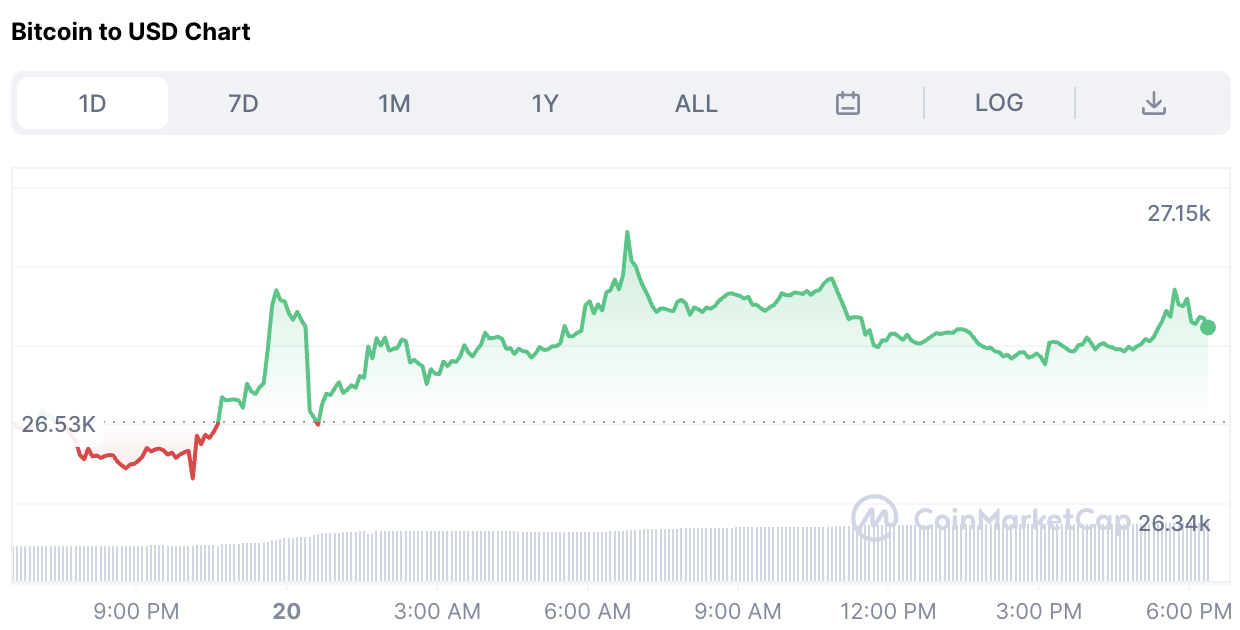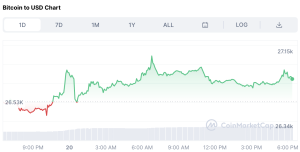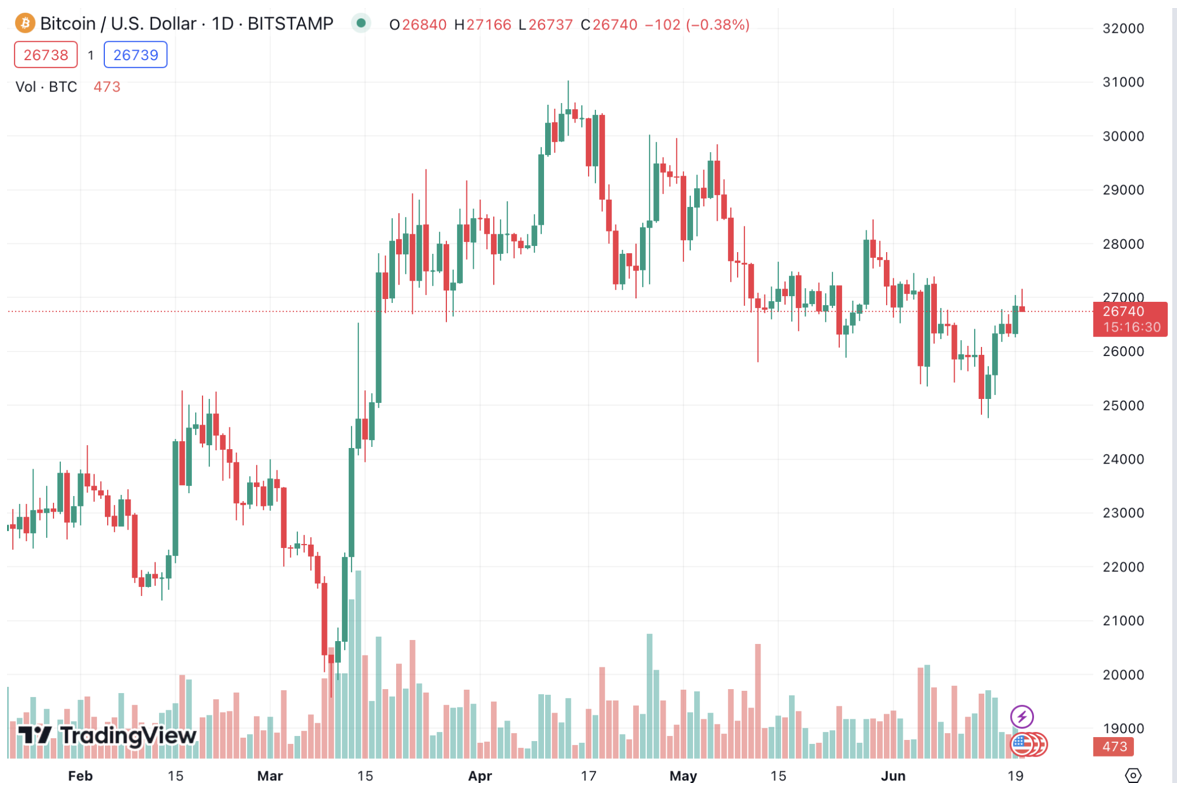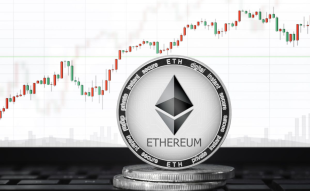Join Our Telegram channel to stay up to date on breaking news coverage
The global cryptocurrency market saw a positive start to the Asia trading day, as both Bitcoin and Ether experienced gains. Bitcoin, the world’s largest digital asset, rose by 1.24% to $26,770, while Ether increased by 0.09% to $1,725.
Analyst Spots Bitcoin In a Difficult Spot
Despite the overall optimism surrounding Bitcoin, some analysts remain cautious. Craig Erlam, a Senior Market Analyst with OANDA, expressed concerns about the vulnerability of Bitcoin. Although the cryptocurrency rebounded after reaching three-month lows last week, Erlam believes further declines are possible.
He pointed out that the two-month trend is not in Bitcoin’s favor, and recent news developments have added to the uncertainty. Nevertheless, Erlam emphasized that Bitcoin has had a remarkable year, with its value still more than 50% higher compared to previous periods.
Erlam does not dismiss the bull case for Bitcoin entirely but suggests that it has yet to materialize. He considers the recent downturns to be part of a correction phase within an overall optimistic bull market. However, Erlam sees little evidence of an imminent improvement, especially considering the Securities and Exchange Commission’s intensified scrutiny of major exchanges.
Several cryptocurrencies experienced notable movements during the recent trading period. Solana (SOL) emerged as the biggest gainer, rising by 2.81%. It operates as a smart contract platform. Polygon (MATIC) followed closely behind, with a 1.31% increase. Similar to Solana, Polygon is a smart contract platform that aims to provide scalability solutions.
AVAX also made the list of winners, securing an 0.54% increase in value. In terms of the biggest losers, Shiba Inu (SHIB) experienced a decline of 2.19%. Polkadot (DOT), a smart contract platform, saw a decrease of 1.6%.
Market Dominance Puts Bitcoin On Front Page
Bitcoin’s dominance in the cryptocurrency market has exceeded 50%, indicating its significant share of the total market capitalization. Investors have witnessed this event after over a couple of years.
Surpassing 50% dominance means that Bitcoin alone contributes to half of the overall $1.07 trillion market capitalization of the crypto industry. Bitcoin’s current market capitalization stands at $521 billion.
Ether’s market dominance has remained relatively stable around 20% for the past year. Together, the combined value of Bitcoin and Ether now accounts for approximately 70% of the entire crypto market.
Michael Saylor, co-founder of MicroStrategy, predicts that Bitcoin’s market dominance will surpass 80% in the coming years due to increasing regulatory pressure. He believes that other crypto assets, including stablecoins, will diminish.
The recent filing by investment giant Blackrock for a Bitcoin spot ETF is considered a driving factor behind Bitcoin’s recent price surge.
Examining Crypto Exchanges and Market Makers
A recent report by the Financial Times shed light on the practices of crypto exchanges and their use of internal market makers. Market makers utilize their own funds to enable the trading of tokens on exchanges, enabling investors to quickly liquidate their positions without the need for a counterpart. Without the presence of market makers, liquidity would decrease, especially for smaller tokens.
Crypto.com, a prominent crypto exchange, disclosed that it operates an internal market maker. The company asserts that its internal market maker operates similarly to third-party market makers, promoting tight spreads and efficient markets on their platform.
Crypto.com emphasized that this practice is not controversial. The existence of market makers is essential for the functioning of decentralized finance (DeFi) platforms like Uniswap.
While many exchanges operate internal market makers, some opt to allow external market makers to operate on their platforms. Allegations of conflict of interest have arisen due to some market makers being investors in the tokens they trade. However, such allegations have yet to be proven in court.
The involvement of market makers, whether internal or external, enables exchanges to list smaller cap tokens and facilitate the formation of active markets. Without market makers, these tokens may struggle to attract sufficient buyer-seller activity, reducing trading opportunities and overall appeal.
Although operating internal market makers raises concerns about conflicts of interest, it is a prevalent practice within the industry. Retail equity trades often operate similarly. Alternatively, DeFi’s automated market makers, which rely on algorithms and open-source technology, offer an alternative approach but are not without accusations of bias.
Crypto.com responded to the Financial Times report, stating that it was merely following industry practices and treating participants equally. While the optics may not be ideal, it reflects the reality of the cryptocurrency market.
Related Articles
- Crypto Legislation in Congress Just the First Step, Says Policy Expert
- Cryptocurrency Market Volatility Persists Amid Bitcoin’s Price Dip and Fed Meeting Anticipation
- Crypto.com review
Best Wallet - Diversify Your Crypto Portfolio
- Easy to Use, Feature-Driven Crypto Wallet
- Get Early Access to Upcoming Token ICOs
- Multi-Chain, Multi-Wallet, Non-Custodial
- Now On App Store, Google Play
- Stake To Earn Native Token $BEST
- 250,000+ Monthly Active Users
Join Our Telegram channel to stay up to date on breaking news coverage




